
Shalom, y'all. That's right, the OCeeker recently drove his goyisher self to Temple Beth Sholom in Santa Ana for a Shabbat evening service.
First things first: Rabbi Heidi Cohen is one cute clergygirl! Decked in black slacks and a red blouse, with a loose-fitting, long-sleeve black outer garment, the slender Cohen also wore a lady-like white kippah on her lovely head. She donned a prayer shawl too. It's called a tallit. Cohen's brown eyes lit up every time she smiled, which was through most of the service. A hot woman in Orange County who is pious and can string together more than three lucid sentences? Who knew?
]
Cohen has led Temple Beth Sholom since 1998. According to the temple's website, she brings traditional Jewish concepts to a Reform Judaism context; that means cherry-picking the wisdom of the ancients and mixing it with some liberal ideas about inclusion and letting women take shit over.
Adar 1, 5772; 7:30 p.m.
Temple Beth Sholom was founded in 1943 by 25 families who gathered in the home of one of its members. The oldest Reform Jewish temple in Orange County, its first building was at the corner of Eighth and Bush streets in Santa Ana. The congregation moved to its current location at Tustin and Fairhaven avenues in 1962.
The pale building sits across the street from a Shell gas station. The campus is clean and well-kept. Inside the lobby, one is greeted by a marble wall, with a glass case to the left wherein is kept several examples of dishes and other collectibles one can purchase for a shekel or two.
The sanctuary is filled with long pews that stretch over a mauve carpet, with six gold chandeliers hanging from the ceiling. A simple wooden pulpit stands in the middle of the stage, which is flanked by Old Glory one side and the flag of Israel on the other. The wall behind the stage is festooned with a large menorah on the left, and Hebrew script on the right, with the English words “Know before whom you stand…you stand this day before the Eternal our God.” In the middle of the wall there is a mysterious double-door that rises to the ceiling, decorated ornately with what looks like sharp, golden icicles that shoot downward.
The OCeeker was approached by an elderly women who couldn't have been more than five feet tall. She seemed to be visiting for the first time, asking, as she looked to Cohen, who stood behind the pulpit, “Is she the rabbi?”
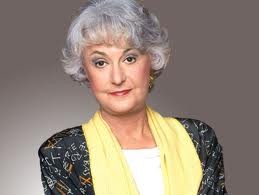
Why, yes she is, my kosher cougar.
The OCeeker took his seat on the left side of the sanctuary, next to a wall filled with plaques honoring dead relatives. Adonai bless John Fainbarg and Maud Fogler. Upon the backs of the pews, gold plates honor of more relatives. The OCeeker paused to reflect on the memory of Ruth Given Holzman.
Roughly 100 worshippers were in attendance, and only a handful of the men sported kippot. Unless one finds Beatrice Arthur and Abe Vigoda attractive, Temple Beth Shalom isn't the place to cat around on a Friday night.
Bumper sticker in parking lot: “Cowgirl up”
Cohen greeted the congregation with a warm “shalom Shabbat”, and handed over the service to Cantor David Reinwald for an acoustic nigun, a Jewish religious song.
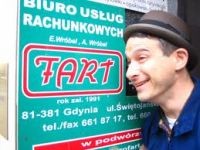
Reinwald earned his kesef by leading the congregation through several ditties. On this night, Cohen didn't exposite the Scriptures, but joined Reinwald in singing the songs, and peppering the celebration with blessings and prayers for those in attendance. The OCeeker joined along by opening up a prayer book, which is bassackwards and has page one where a glossary would start in a regular ol' English book. The Hebrew words were augmented by an English translation, and the songs were based off the Scriptures. Not to get all human shit, but the OCeeker was moved many times by the chorus of Hebrew lyrics sung in a soft and delicate cadence that must have touched the heavens. Kinda like King-Ad Rock spittin' “I'm a funky-ass Jew and I'm on my way/and I got to say fuck the KKK.”[A Centennial Celebration of a Zionist Effort
February 24 marked the 100-year anniversary of the founding of Hadassah, the Women's Zionist Organization of America. The group was formed in New York City by Henrietta Szold and the Daughters of Zion, to promote health care and train nurses in Palestine; it claims around 300,000 members worldwide.
Minutes into the Shabbat service, Cohen called forth a girl who was to celebrate her bat mitzvah over the weekend, telling her she stands in the footsteps of Szold.
“Today, as you are starting this journey of becoming a bat mitzvahed, be inspired,” Cohen said. “Know, my dear, you can make a difference. Know you are empowered. You have the power to change the world, just as one woman named Henrietta Szold did over a hundred years ago.”
Cohen then invited the girl onstage, along with her family, and allowed her the honor of lighting the Shabbat candles and leading kiddush–the Jewish blessing and prayer over the wine.
“May the light of Shabbat illumine our sanctuary and its warmth remain with us throughout our days,” the girl read from the prayer book.
Reinwald and Cohen then led the singing of “L'Khah Dodee”, a song to welcome Shabbat.
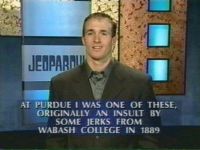
Cohen instructed the congregation to rise and face the front door, welcoming Shabbat to “come in and join us,” then motioned for the congregation to sit down, a la New Orleans Saints quarterback Drew Brees when he quiets the home crowd during a game-winning drive down the field.
Cohen later invited two elderly women to offer a Haddasah Shabbat prayer, and they remembered both Szold and Queen Esther, the Biblical figure for whom the movement was named. Hadassah was established during the Jewish holiday Purim, which marks Queen Esther foiling a plot by an asshole named Haman to go all Waffen-SS on the Israelites.
February 24 marked the 100-year anniversary of the founding of Hadassah, the Women's Zionist Organization of America. The group was formed in New York City by Henrietta Szold and the Daughters of Zion, to promote health care and train nurses in Palestine; it claims around 300,000 members worldwide.
Minutes into the Shabbat service, Cohen called forth a girl who was to celebrate her bat mitzvah over the weekend, telling her she stands in the footsteps of Szold.
“Today, as you are starting this journey of becoming a bat mitzvahed, be inspired,” Cohen said. “Know, my dear, you can make a difference. Know you are empowered. You have the power to change the world, just as one woman named Henrietta Szold did over a hundred years ago.”
Cohen then invited the girl onstage, along with her family, and allowed her the honor of lighting the Shabbat candles and leading kiddush–the Jewish blessing and prayer over the wine.
“May the light of Shabbat illumine our sanctuary and its warmth remain with us throughout our days,” the girl read from the prayer book.
Reinwald and Cohen then led the singing of “L'Khah Dodee”, a song to welcome Shabbat.

Cohen instructed the congregation to rise and face the front door, welcoming Shabbat to “come in and join us,” then motioned for the congregation to sit down, a la New Orleans Saints quarterback Drew Brees when he quiets the home crowd during a game-winning drive down the field.
Cohen later invited two elderly women to offer a Haddasah Shabbat prayer, and they remembered both Szold and Queen Esther, the Biblical figure for whom the movement was named. Hadassah was established during the Jewish holiday Purim, which marks Queen Esther foiling a plot by an asshole named Haman to go all Waffen-SS on the Israelites.
The prayer was followed by more singing from the prayer book, some of it led in English.
Cohen covered her face during the Shema prayer, which takes its cue from Deuteronomy 6:4-9 and begins: “Hear, O Israel: the LORD our God, the LORD is one.” Then came the Amidah, the main prayer of the Jewish liturgy. As the congregation stood, Cohen and Reinwald opened the mysterious double-door behind them and prayed toward a towering display of silver religious pieces. The congregation did a little dip and bow during the Amidah, which, according to Jewishvirtuallibrary.org, has been revised by Reform Judaism to fit its doctrine and cut down the service time:
“As a result, references to a personal messiah as opposed to a messianic age, resurrection of the dead, restoration of the sacrificial cult, and the existence of angels are all rephrased. Changes have also been made to conform with the egalitarian nature of Reform Judaism.”
Typical liberals.
Cohen later called up three elderly women to read the centennial story of Hadassah and Henrietta Szold:
“Because they were practical Zionists. They dreamed of what could be in Palestine–and then they took off their gloves, rolled up their sleeves, opened their pocketbooks, and made it happen. They did send nurses to a bleak and barren Jerusalem…and laid the groundwork for Israel's healthcare system. They made the deserts bloom. They rescued and nurtured and educated children who would grow up to shape a new nation.”
Cohen spoke more about Szold and Haddasah, and the story of Queen Esther.
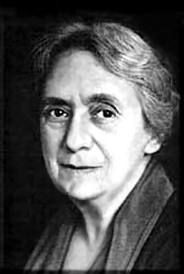
”Henrietta Szold awakened in all of us the spirit of volunteerism and helped us realize the important message that we too can make a difference,” Cohen said.
Two more elderly women were also called forth to make a Hadassah presentation, one of them saying, “So there's Henrietta Szold, there's Esther, and and there's our own Rabbi Cohen to inspire us every day.”
Two more elderly women were also called forth to make a Hadassah presentation, one of them saying, “So there's Henrietta Szold, there's Esther, and and there's our own Rabbi Cohen to inspire us every day.”
They gave Cohen a lifetime membership to Hadassah.
Kevin Glaser, a director at Temple Beth Sholom, then took the stage to make some announcements. This was distinct from Christian churches, where announcements are a verbal epidural before the sermon.
Glaser mentioned the temple's Muppet Shpeil on March 10, before Purim. The 21-and-over event is touted as a night of laughing, eating and drinking, and those who plan to go are encouraged to bring their dollar bills for Jell-o shots. Cohen guaranteed it would be a “wocka wocka good time.”
Cohen gave more props to Szold, and the congregation sang another song, with the mystery double-door opened once more (and another dip and bow). Cohen then led a prayer of mourning for the dead loved ones of those in attendance.
The congregation, some wrapping their arms around one another, sang “Hatikvah”, Israel's national anthem, as they stood and faced that nation's flag. The act would bring utter confusion to patriotic American evangelical Zionists.
Cohen then called up the girl once more, to lead the blessing over a loaf of bread.
“Baruch ata Adonai elohenu melech haolam, hamotei lechem min ha-aretz” means “Blessed are you ruler of the universe, who brings forth bread from the ground.”
After the blessing, Cohen and the girl pulled the bread apart, and Cohen reminded the girl's father that “our blessings come not only from our hands but from God on high.”
She then tossed her half to the girl's dad and said, “Nice catch.”
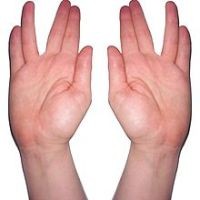
Cohen said a final blessing over the congregation, raising her hands in a gesture that apparently inspired the Vulcan salute. Unlike pastors, Cohen said her blessings and prayers with her eyes open and her gaze fixed upon the congregation.
We then raced to the social hall. The OCeeker was the first to the pastry table, where he feasted on hamentashen!
The OCeeker gave Cohen's service a B. She's easy on the eyes and moves things along at a steady clip, but lesser goyim could get lost in the liturgy.
Although a nice gentleman opened the front door for the OCeeker, no one introduced themselves.
Temple Beth Sholom meets every Friday at 7:30 p.m., and every Saturday at 10:30 a.m. at 2625 N. Tustin Ave., Santa Ana, (714) 628-4600; www.tbsoc.com
We then raced to the social hall. The OCeeker was the first to the pastry table, where he feasted on hamentashen!
The OCeeker gave Cohen's service a B. She's easy on the eyes and moves things along at a steady clip, but lesser goyim could get lost in the liturgy.
Although a nice gentleman opened the front door for the OCeeker, no one introduced themselves.
Temple Beth Sholom meets every Friday at 7:30 p.m., and every Saturday at 10:30 a.m. at 2625 N. Tustin Ave., Santa Ana, (714) 628-4600; www.tbsoc.com

